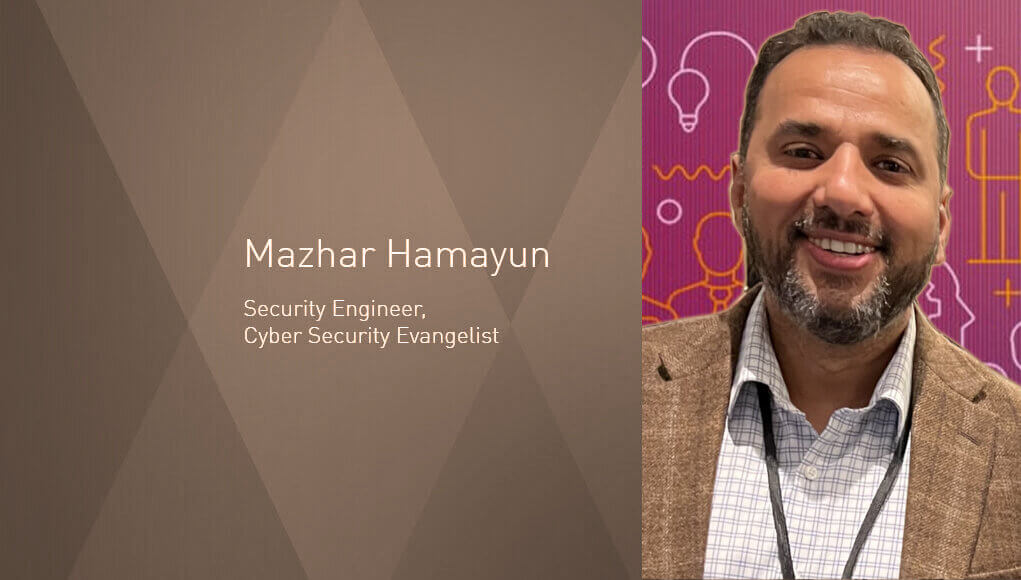By Mazhar Hamayun, cyber security engineer and member of the Office of the CTO at Check Point.
In the digital age, public sector organizations face a myriad of cyber security challenges that can potentially compromise sensitive information and critical infrastructure.
From phishing schemes to ransomware attacks, public sector organizations must stay ahead of threats while simultaneously working with limited resources and complying with regulatory mandates.
In this article, we will explore some of the most common cyber security challenges faced by public sector organizations and outline a clear approach to creating a successful cyber security program.
It is essential that public sector organizations prioritize cyber security and take proactive measures to protect their assets, infrastructure, and reputations.
What are the most common challenges faced by public sector organizations?
Public sector organizations face a variety of cyber security challenges, including:
- Insider threats: Employees or contractors with access to sensitive information can accidentally or intentionally leak or misuse data.
- Phishing attacks: Social engineering techniques can trick individuals into becoming victims and accidentally leaking confidential information. Alternatively, social engineering can trick people into downloading malware.
- Ransomware: In the case of ransomware, an attacker deploys malware that can encrypt files. Then, the attacker can demand payment in exchange for encryption removal.
- Advanced persistent threats (APTs): These attacks are very sophisticated and persistent attacks that are intended to steal sensitive data and/or to disrupt operations. In most cases, they are organized by a large group of malicious actors and uniquely tailored to disrupt a specific target.
- Budget constraints: Most public sector organizations operate based on fixed budgets. While this approach reflects careful planning, it can also leave organizations with limited resources contending with surprise expenses. Budgetary constraints can make it very difficult to implement and maintain effective cyber security measures.
- Legacy systems: Older hardware and software may be vulnerable to cyber attacks and difficult to patch or replace.
- End of life: Most organizations plan ahead of time to ensure that they don’t have an unsupported or end of life hardware or software in place, but in a post Covid-19 world, most public sector organizations are dealing with budget cuts and it’s becoming difficult for administrators to keep up with technology needs.
- Software vulnerabilities: Sometimes, organizations can experience a cyber breach due to the existence of vulnerable or unpatched systems. Malicious actors can use unpatched vulnerabilities as mechanisms through which to leverage publicly available software exploits and cause a damage.
- Compliance requirements: Public sector organizations may be subject to regulatory requirements that add complexity to their cyber security programs. It can be a challenge to obtain software that fulfills compliance and regulatory requirements.
Addressing all of these challenges requires a multi-faceted approach that includes employee training, regular vulnerability assessments, security audits, incident response plans, and ongoing investment in modern security technologies.
Defining a successful cyber security program for public sector organizations:
Public sector groups may wish to start with the following:
- Identify the assets that need to be protected: Public sector organizations typically have a wide range of assets that need to be protected, including sensitive data, systems, and infrastructure. It is important to build a registry or database of all assets, including IT and non-IT assets, and to determine their level of criticality. In addition, organizations should identify the owner of the assets and ensure that someone will take care of maintenance and monitoring needs.
- Assess the risks: One of the core action items required of every public sector organization is to establish a governance, risk and compliance team that can conduct risk exercises and, based on results, make improvements.
- Develop policies and procedures: Based on the risks that have been identified, public sector organizations should develop policies and procedures that outline how to protect their assets. This may include developing policies related to access control, password management and incident response.
- Train employees: Employees are often the weakest link in an organization’s cyber security posture. It is important to train them on best practices for cyber security, such as how to recognize and respond to phishing emails.
- Implement technical controls: In addition to implementing policies, procedures and awareness training, public sector organizations should implement technical controls, such as firewalls, intrusion detection systems, and encryption.
- Monitor and respond to threats: Public sector organizations should have the ability to monitor their systems and infrastructure for threats and to respond to them in a timely manner.
- Conduct regular audits: Audits can help identify vulnerabilities and weaknesses in an organization’s cyber security posture, and can provide an opportunity to make improvements.
- Stay up-to-date on threats: Cyber threats are constantly evolving, so it is important to stay up-to-date on the latest threats and vulnerabilities.
- Foster partnerships: Public sector organizations should foster partnerships with other organizations, such as other government agencies, to share information and best practices.
- Continuously improve: Cyber security is a continuous process, and public sector organizations should continuously assess their posture and make improvements as necessary to stay ahead of emerging threats.
Conclusion
Cyber security is of utmost importance for public sector organizations, as they face a variety of challenges that can compromise the availability, confidentiality and integrity of sensitive information.
Addressing these challenges requires a comprehensive approach. For more public sector cyber security insights, please see CyberTalk.org’s past coverage.
Lastly, to receive more cutting-edge cyber security news, best practices and analyses, please sign up for the CyberTalk.org newsletter.




